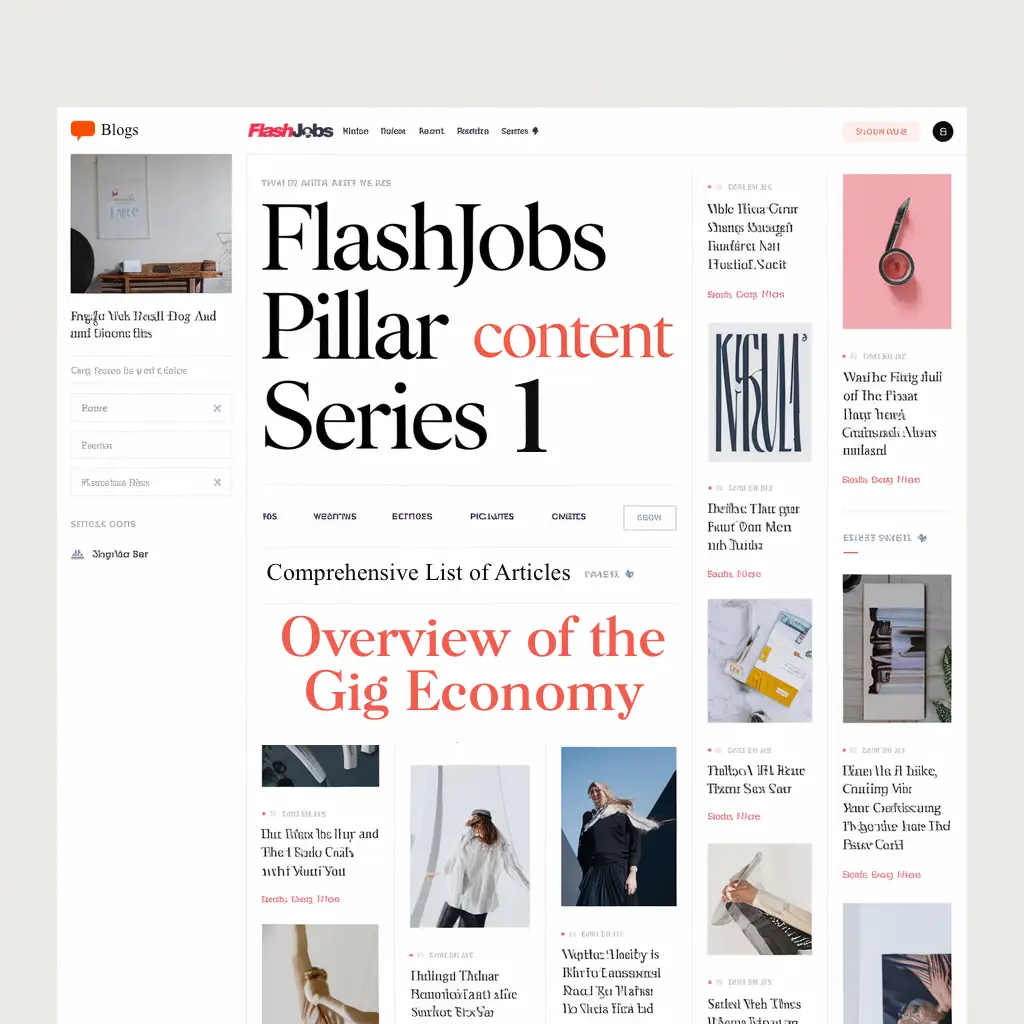Table of Contents
Comparing Staffing Models: Flexible Solutions for Modern Workforce Management
In today’s dynamic business landscape, organizations are constantly seeking effective ways to manage their workforce. Different staffing models offer unique approaches to meet varying business needs and objectives. From traditional in-house teams to flexible staffing solutions, each model presents its own set of advantages and challenges.
Choosing the right staffing model is crucial for organizational success, as it directly impacts productivity, cost-effectiveness, and adaptability to market fluctuations. Companies must carefully evaluate their specific requirements, project timelines, and long-term goals when deciding between staff augmentation, outsourcing, or fixed staffing options. These choices can significantly influence an organization’s ability to scale, access specialized skills, and manage workload fluctuations efficiently.
The evolving nature of work and technological advancements have given rise to more flexible staffing solutions. Staff augmentation and contingent workforce models are gaining popularity, allowing businesses to quickly adapt to changing project demands and skill requirements. These approaches enable organizations to maintain a core team while supplementing it with external talent as needed, striking a balance between stability and flexibility.
Key Takeaways
- Selecting an appropriate staffing model is essential for optimizing workforce management and achieving business objectives.
- Flexible staffing solutions like staff augmentation offer adaptability and access to specialized skills without long-term commitments.
- Effective implementation of any staffing model requires careful consideration of organizational needs, industry trends, and workforce analysis.

Staff Augmentation vs. Traditional Staffing Model
Staff augmentation and traditional staffing models offer distinct approaches to workforce management. Each model has unique characteristics that impact flexibility, scalability, and organizational structure.
Defining Staff Augmentation And Its Key Characteristics
Staff augmentation is a flexible outsourcing strategy that supplements in-house teams with external talent on a temporary or project-specific basis. This model allows companies to quickly scale up resources without long-term commitments.
Key characteristics of staff augmentation include:
• Rapid access to specialized skills • Cost-effective resource allocation • Flexibility to adjust team size based on project demands • Reduced onboarding time and administrative burden
Staff augmentation is particularly useful for addressing short-term skill gaps or managing fluctuating workloads. It enables businesses to maintain control over projects while benefiting from external expertise.
Understanding Traditional Staffing Models And Their Limitations
Traditional staffing models involve hiring full-time employees directly under the employer. This approach offers stability and long-term workforce development but comes with certain limitations.
Characteristics of traditional staffing:
• Permanent employment relationships • Extensive recruitment and onboarding processes • Fixed labor costs and long-term commitments • In-house skill development and retention strategies
While traditional staffing provides a stable workforce, it can be less adaptable to changing market conditions and project demands. Companies may struggle to quickly acquire specialized skills or adjust team sizes without significant time and resource investments.
Comparing Flexibility And Scalability Between The Two Models
Staff augmentation offers superior flexibility and scalability compared to traditional staffing models. Companies can quickly engage temporary or contract workers to fill specific roles or address expertise gaps for defined periods.
Flexibility comparison: • Staff Augmentation: High adaptability to project needs and market changes • Traditional Staffing: Limited flexibility due to fixed workforce structure
Scalability comparison: • Staff Augmentation: Rapid team expansion or reduction based on demand • Traditional Staffing: Slower scaling process, often constrained by budget and HR policies
Staff augmentation allows businesses to more efficiently align their workforce with project timelines and specific skill requirements. This model is particularly beneficial for industries with variable workloads or fast-changing technology landscapes.
Main Advantages Of Using A Staff Augmentation Model
Staff augmentation offers organizations flexibility and access to specialized talent. It provides cost-effective solutions while enabling quick project execution and scalability.
Cost-Effectiveness And Reduced Overhead Expenses
Staff augmentation helps companies control labor costs and improve cost efficiency. By hiring external professionals for specific projects, businesses avoid long-term commitments and overhead expenses associated with full-time employees.
This model allows organizations to scale their workforce up or down based on project demands, optimizing resource allocation. Companies can maintain a lean core team while accessing specialized skills as needed.
Staff augmentation also eliminates recruitment, training, and benefits costs for permanent employees. This approach is particularly beneficial for businesses facing budget constraints or fluctuating workloads.
Access To Specialized Skills And Expertise
Staff augmentation enables companies to quickly fill skill gaps in their existing teams. Organizations can bring in experts with specific technical knowledge or industry experience for short-term projects.
This model provides access to a global talent pool, allowing businesses to find professionals with niche skills that may be scarce locally. It enhances the team’s overall capabilities without the need for extensive training.
Companies can improve project quality and outcomes by leveraging specialized expertise. This approach is particularly valuable in rapidly evolving fields like software development or emerging technologies.
Faster Onboarding And Project Execution
Staff augmentation accelerates project timelines by reducing recruitment and onboarding time. External professionals can be integrated into existing teams quickly, allowing projects to start sooner.
These specialists often bring valuable experience from diverse projects, contributing to efficient problem-solving and streamlined workflows. They can hit the ground running, minimizing the learning curve typically associated with new hires.
The model offers flexibility in adjusting team composition as project requirements evolve. This agility helps organizations respond swiftly to changing market demands or unexpected challenges.
Successfully Implementing Staff Augmentation
Staff augmentation can be a powerful strategy for enhancing organizational capabilities. When executed properly, it allows companies to address skill gaps flexibly, manage workload fluctuations, and achieve project goals efficiently.
Identifying Skill Gaps And Project Requirements
Effective staff augmentation begins with a thorough assessment of current capabilities and project needs. Organizations should conduct skills inventories and gap analyses to pinpoint specific areas where external talent is required.
Project managers and team leaders must clearly define the project scope, timelines, and deliverables. This information helps determine the number of augmented staff needed and the specific skills they should possess.
Companies can use skills assessment tools to evaluate their existing workforce and identify areas for improvement. These insights can then guide decisions about whether to train internal staff or bring in external expertise.
Selecting The Right Staff Augmentation Partner
Choosing the right staff augmentation provider is crucial for success. Look for partners with a proven track record in your industry and access to a diverse talent pool.
Consider factors such as the partner’s vetting process, ability to scale quickly, and expertise in managing remote teams. Request case studies and client references to gauge their performance.
Evaluate potential providers based on their staffing models and flexibility. Some may offer time-based augmentation, while others provide project-based solutions. Select the model that best aligns with your business goals and project requirements.
Negotiate clear terms regarding costs, project milestones, and performance metrics. Ensure the partner can provide rapid replacements if an augmented staff member doesn’t meet expectations.
Integrating Augmented Staff With In-House Teams
Smooth integration of augmented staff is essential for project success. Start by clearly communicating roles, responsibilities, and expectations to both in-house and augmented team members.
Provide comprehensive onboarding to familiarize augmented staff with company culture, tools, and processes. This helps them adapt quickly and contribute effectively.
Implement collaborative project management tools to facilitate seamless communication and task tracking. Regular check-ins and progress reports keep everyone aligned and accountable.
Foster an inclusive work environment that values both in-house and augmented staff equally. Encourage knowledge sharing and cross-team collaboration to maximize the benefits of diverse expertise.
Industries Benefiting From Staff Augmentation Services
Staff augmentation provides valuable solutions across various sectors, offering specialized skills and flexibility. This approach helps industries adapt to changing demands, fill skill gaps, and efficiently manage project-specific needs.
Software Development And IT Sector Examples
The IT industry frequently leverages staff augmentation services for software development projects. Companies can quickly scale their teams by bringing in expert developers, UI/UX designers, or QA specialists for specific projects.
This model allows businesses to access niche skills like blockchain development or AI expertise without long-term commitments. For example, a fintech startup might augment its team with experienced mobile app developers to launch a new product.
IT firms also use staff augmentation for maintenance and support roles, ensuring 24/7 coverage without overburdening in-house staff.
Healthcare And Pharmaceutical Industry Applications
Healthcare organizations utilize staff augmentation to address fluctuating demands and specialized needs. Hospitals may bring in temporary nurses during flu seasons or augment their IT teams to implement new electronic health record systems.
Pharmaceutical companies often use this model for clinical trials, bringing in data analysts and research specialists for specific study phases. This approach allows them to maintain flexibility while ensuring access to the right expertise.
Staff augmentation also helps healthcare providers quickly adapt to regulatory changes by bringing in compliance experts or specialized trainers as needed.
Financial Services And Fintech Use Cases
Financial institutions leverage staff augmentation to navigate complex projects and regulatory requirements. For example, banks might augment their teams with cybersecurity experts to enhance their digital infrastructure or bring in risk management specialists for specific audits.
Fintech companies often use this model to scale rapidly, augmenting their core teams with experienced developers or data scientists to launch new products or features. This approach allows them to remain agile and competitive in a fast-paced market.
Staff augmentation in finance also helps with seasonal demands, such as bringing in additional customer support staff during tax seasons or peak investment periods.
Food & Beverage And Retail Industry Implementation
The food & beverage and retail sectors extensively use staff augmentation to manage seasonal fluctuations and varying customer demands. Restaurants and retail chains often supplement their core teams with temporary staff during peak shopping seasons, holidays, or special promotional events.
These industries leverage staff augmentation to maintain operational efficiency while controlling labor costs. For example, a retail chain might bring in additional sales associates and inventory specialists during the holiday season, while restaurants may augment their service staff for large events or tourist seasons. This approach allows businesses to scale their workforce based on real-time demand without compromising service quality.
Staff augmentation in these sectors also supports specialized needs, such as bringing visual merchandisers for store redesigns or experienced bartenders for exclusive events. This flexibility enables businesses to maintain high service standards while adapting to changing consumer preferences and market trends. Additionally, companies can quickly access expertise for implementing new point-of-sale systems or training staff on updated service protocols.
Addressing Variable Staffing Needs Through Staff Augmentation
Staff augmentation offers a flexible solution for organizations facing fluctuating workloads and project demands. This approach allows companies to scale their workforce efficiently while maintaining a balance between permanent and temporary staff.
Adapting To Fluctuating Workloads And Project Demands
Staff augmentation enables businesses to quickly adjust their workforce capacity in response to changing project requirements. Companies can bring in skilled professionals to supplement their existing teams during peak periods.
This flexibility helps organizations manage seasonal fluctuations and unexpected surges in workload without compromising quality. By leveraging external talent, businesses can maintain productivity levels and meet project deadlines even during busy periods.
Staff augmentation also allows companies to access specialized skills for specific projects without the need for long-term commitments. This approach is particularly beneficial for industries with cyclical demands or project-based work.
Balancing Permanent And Temporary Workforce
Effective workforce planning requires maintaining an optimal mix of permanent and temporary staff. Staff augmentation helps organizations strike this balance by temporarily providing access to skilled professionals.
This strategy allows companies to:
- Retain a core team of permanent employees for ongoing operations
- Bring in temporary workers to handle peak workloads or specialized projects
- Reduce labor costs associated with maintaining a large permanent workforce
Organizations can adapt to changing market conditions by leveraging staff augmentation while maintaining operational stability. This approach also allows for the evaluation of potential permanent hires through temporary assignments.
Implementing Flexible Staffing Strategies
Successful staffing models incorporate flexible strategies to address variable staffing needs. Staff augmentation plays a key role in these strategies by offering scalability and adaptability.
To implement effective flexible staffing strategies, organizations should:
- Regularly assess workload patterns and project pipelines
- Identify skill gaps within the permanent workforce
- Develop relationships with reliable staffing partners
- Create streamlined onboarding processes for temporary staff
By adopting these practices, companies can quickly respond to changing staffing requirements and maintain optimal productivity levels. Flexible staffing strategies also help organizations minimize the risks associated with over- or under-staffing.
Overcoming Potential Challenges In Staff Augmentation
Staff augmentation presents unique challenges that organizations must address to maximize its benefits. Companies can create a seamless and productive augmented workforce by focusing on team integration, knowledge management, and security concerns.
Managing Cultural Fit And Team Integration
Integrating augmented staff into existing teams requires careful consideration of cultural fit. Companies should clearly communicate expectations and company values from the start. Implementing buddy systems or mentorship programs can help new team members acclimate quickly.
Regular team-building activities that include both in-house and augmented staff foster cohesion. Virtual coffee chats or online collaboration tools can bridge gaps for remote workers.
Managers should proactively address any conflicts or misunderstandings that arise. Encouraging open communication and feedback channels helps identify and resolve issues early.
Ensuring Knowledge Transfer And Retention
Knowledge transfer is crucial for long-term success in staff augmentation. Organizations should develop structured onboarding processes that cover both technical skills and company-specific knowledge.
Creating detailed documentation of processes, best practices, and project histories helps preserve institutional knowledge. Implementing collaborative platforms and knowledge bases allows easy access to information.
Regular training sessions and cross-training opportunities keep all team members up-to-date. Pairing augmented staff with in-house employees on projects facilitates organic knowledge sharing.
Exit interviews and proper handover procedures ensure critical information isn’t lost when augmented staff complete their assignments.
Addressing Security And Confidentiality Concerns
Protecting sensitive data is paramount when working with external staff. Implementing robust access control measures and requiring non-disclosure agreements are essential first steps.
Companies should provide secure, company-issued devices and VPNs for remote workers. Regular security training helps augmented staff understand and follow best practices.
Establishing clear data handling protocols and monitoring systems helps prevent breaches. Limiting access to sensitive information on a need-to-know basis reduces risk.
Regular security audits and policy updates ensure the organization stays ahead of emerging threats. A clear incident response plan prepares the team to act swiftly if issues arise.
Role Of Staffing Agencies In The Staff Augmentation Model
Staffing agencies play a crucial role in facilitating organizational staff augmentation. They bridge the gap between companies seeking talent and skilled professionals looking for opportunities.
The Role Of Staffing Agencies In Sourcing Talent
Staffing agencies excel at tapping into global talent pools and identifying qualified candidates. They maintain extensive databases of professionals across various industries and skill sets. This allows them to quickly match candidates to specific project requirements.
These agencies handle the initial screening, interviews, and background checks. This saves time for the hiring company’s HR department. Staffing organizations often have established relationships with freelancers and contractors, enabling faster placements.
They also stay updated on market trends and salary expectations. This knowledge helps companies offer competitive compensation packages to attract top talent.
Comparing Staffing Agency Services With Direct Staff Augmentation
Staffing agencies offer a range of services beyond recruitment. They manage payroll, benefits, and compliance issues for the augmented staff, reducing the hiring company’s administrative burden.
Direct staff augmentation, on the other hand, gives companies more control over the hiring process. It allows for a closer cultural fit and integration with existing teams. However, it requires more time and resources from the company’s HR team.
Agencies often provide faster turnaround times for filling positions. They can quickly scale up or down based on project demands. In the long run, direct augmentation may offer cost savings for companies with consistent staffing needs.
Choosing Between Staffing Agencies And Dedicated Augmentation Partners
The choice depends on several factors, including project scope, duration, and required expertise. Staffing agencies are ideal for short-term projects or when rapid scaling is needed. They offer flexibility and access to a wide range of skills.
Dedicated augmentation partners are better suited for long-term engagements or specialized projects. They integrate more deeply with the client’s processes and culture, often offer more customized solutions, and can act as an extension of the in-house team.
Companies should consider their budget, timeline, and specific project needs when making this decision. Evaluating the level of support and expertise required will help determine the most suitable option.
Integration Of Online Job-Matching Platforms In Staff Augmentation
Online job-matching platforms have revolutionized staff augmentation. These platforms leverage AI and flexible models to provide real-time access to talent, transforming how organizations find and manage external resources.
AI-Powered Matching, Screening And Scheduling
AI algorithms now drive sophisticated matching between job requirements and candidate profiles. These systems analyze skills, experience, and cultural fit to suggest optimal matches. AI technologies enhance the flexibility and efficiency of augmented staffing solutions.
Automated screening tools evaluate resumes and conduct initial assessments, streamlining the vetting process and improving the quality of shortlisted candidates.
AI-powered scheduling coordinates interviews and onboarding, reducing administrative overhead. It optimizes the hiring timeline by finding mutually convenient slots for all parties involved.
Flexible Engagement Models
Online platforms offer diverse engagement options to suit varied project needs. These include:
- Short-term contracts
- Project-based assignments
- Part-time roles
- Remote work arrangements
Organizations can quickly scale teams up or down based on workload fluctuations. This agility helps manage costs and align staffing with business objectives.
Freelance marketplaces connect businesses directly with independent professionals. This model bypasses traditional staffing agencies, often resulting in cost savings.
Real-Time Talent Access And Management
Digital platforms provide instant access to global talent pools. Hiring managers can browse profiles, initiate conversations, and make offers rapidly.
Real-time availability tracking allows organizations to quickly identify and engage available professionals. This is particularly valuable for time-sensitive projects or sudden skill gaps.
Integrated project management tools facilitate seamless collaboration with augmented staff. These platforms often include features like:
- Time tracking
- Task assignment
- Performance monitoring
- Secure file sharing
This centralized approach enhances transparency and productivity when working with external talent.
Conclusion: Navigating The Future Of Workforce Management
The evolution of staffing models has fundamentally transformed how organizations approach talent acquisition and workforce management. Understanding different types of staffing models, from traditional employment to staff augmentation, enables businesses to make informed decisions that align with their operational needs and strategic objectives. When comparing traditional and on-demand staffing models, it becomes clear that flexibility and adaptability are key drivers in today’s dynamic business environment.
Staff augmentation has emerged as a powerful solution across various industries, offering organizations the ability to scale efficiently while maintaining quality and controlling costs. This model bridges the gap between fixed staffing limitations and the need for specialized skills, providing a balanced approach to workforce management. As businesses continue to face rapid technological changes and market fluctuations, the ability to blend permanent teams with augmented staff has become increasingly valuable.
The success of any staffing model ultimately depends on careful implementation, clear communication, and strong partnerships with staffing providers. Whether through traditional agencies or modern digital platforms, organizations now have more options than ever to build and maintain their optimal workforce structure. As the business landscape continues to evolve, companies that master the art of flexible staffing will be better positioned to thrive in an increasingly competitive market.





